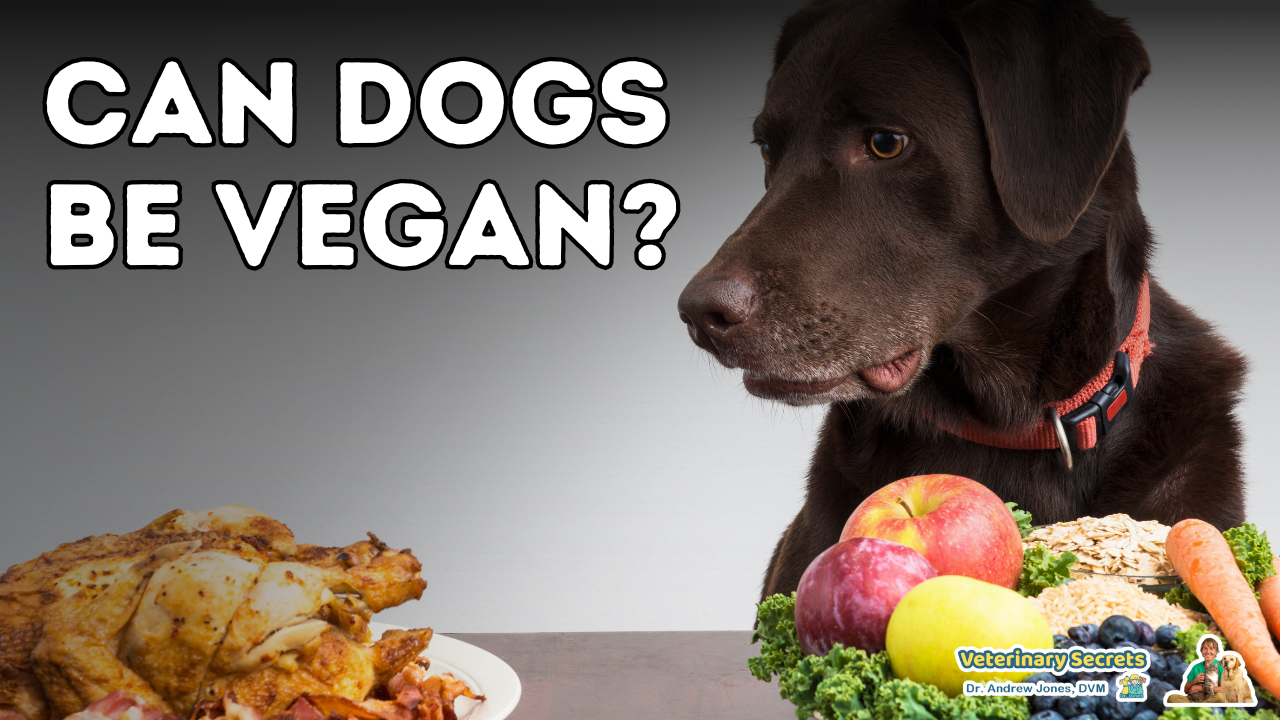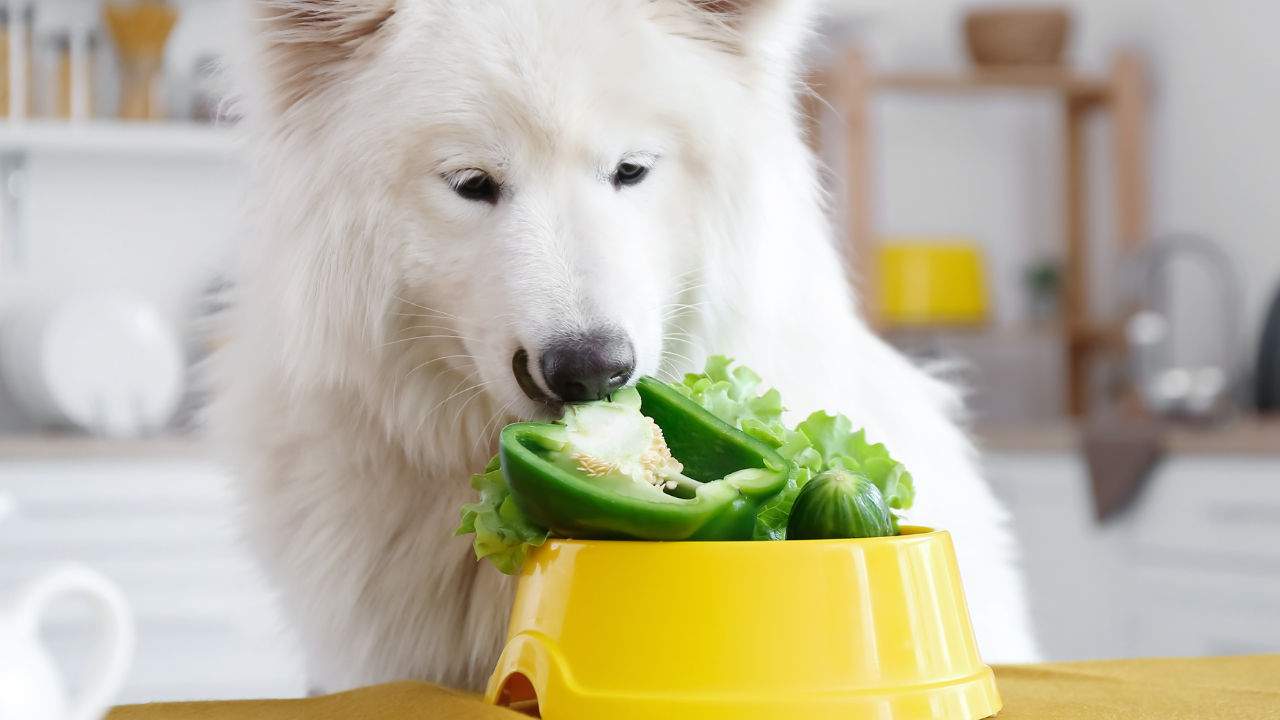Can dogs and cats be Vegan?

What to feed and What NOT to feed? This is a confusing topic, but there are some things I am clear about…
Adding in additional supplements to support your dog/cat’s joint health, skin health, gut health and immune system is an EASY way to ensure they are getting additional nutrients to keep them healthy.
You can purchase individual supplements, or you can give one which combines ingredients to do this all for you:
Go here to see what Dr Jones’ Ultimate Canine and Feline can do for your pets!

This published survey/study has me pondering… perhaps I am wrong?
Vegan diets for dogs may be linked with better health, and could be less hazardous, than meat-based diets: Survey findings may support nutritionally complete vegan dog diets over raw or conventional meat diets
Vegan Diets for Dogs: Healthier than Meat-Based Options?
Introduction
Recent research led by Andrew Knight from the University of Winchester, published in the open-access journal PLOS ONE on April 13, 2022, explores the potential health benefits of vegan diets for dogs compared to traditional meat-based diets. The study analyzed health outcomes in over 2,500 dogs on various diets, including conventional meat, raw meat, and vegan options.
Study Insights
The survey included guardians of 2,536 dogs and inquired about their pets’ health, number of veterinary visits, medications, and specific health disorders. The results indicated that dogs on vegan diets might be healthier and face fewer hazards than those on meat-based diets, including raw meat options.
Key Findings:
- Dogs on conventional diets were generally less healthy than those on raw meat or vegan diets.
- Dogs on raw meat diets appeared healthier than those on vegan diets, but this could be due to younger ages and fewer veterinary visits, not necessarily better health.
Research Limitations and Future Directions
The study acknowledges several limitations that could influence its findings. For example, the age difference between dogs on different diets and the tendency of those on raw meat diets to visit veterinarians less frequently could skew results. The researchers call for more extensive, detailed studies to confirm these preliminary findings and ensure reliability.
Implications for Dog Nutrition
Despite the positive indicators for vegan diets, the study also revisits concerns associated with raw meat diets, such as the risk of pathogens and nutritional deficiencies. These findings support the potential benefits of a nutritionally complete vegan diet for dogs, suggesting it could be the safest and healthiest option.
Personal Perspective and Considerations
As a dog owner, I recognize the challenges and dilemmas posed by different dietary choices. While raw or homemade animal protein diets seem ideal, rising food costs and economic constraints make vegan dog food a viable, if not perfect, option for many.
Practical Advice
Before switching your dog’s diet, consider all aspects of their health and consult with a veterinarian. It’s essential to stay open to new ideas and adapt to changing circumstances in how we feed our pets.
Conclusion
This substantial study offers valuable insights into dog nutrition, highlighting that nutritionally sound vegan diets might be a healthier and less risky choice for dogs. However, further research is needed to solidify these findings and guide dog owners in making informed dietary choices for their pets.
Source and Further Reading
For more detailed information, you can read the original study in PLOS ONE and the article summary on ScienceDaily: ScienceDaily Article on Vegan Diets for Dogs.


Ever since I was rescued my dog when he took a drink of water he kind of gasps. And now it’s constantly almost I think he’s going to collapsed trachea. Is there anything that can help this?
We do have related article for that:
What is a collapsed trachea?
The trachea, also known as the windpipe, is an important structure, which connects the throat to the lungs. It serves the purpose of directing air into the respiratory tract.
The normal trachea is tubular. It maintains its shape because of a series of rings made of cartilage. These rings do not completely encircle the trachea. Instead, they go from the 2 o’clock to 10 o’clock positions. The remainder of the trachea is composed of a flexible membrane that joins the ends of the cartilage rings.
When the cartilage rings are flattened from the top to the bottom, the trachea is said to be collapsed. Rapid inhalation of air can cause the trachea to flatten and make it difficult for air to enter the lungs.
Why does it happen?
We do not completely understand how this condition develops. However, we know that these dogs have an abnormality in the chemical makeup of their tracheal rings. The rings lose their stiffness so they are not able to retain their circular shape. We also know that it occurs in certain breeds of dogs, notably Chihuahuas, Pomeranians, Shih Tzus, Lhasa Apsos, Toy Poodles, and Yorkshire Terriers. Because of that, we suspect that there is a genetic factor involved.
What are the clinical signs?
The most common clinical sign is a chronic cough. It is often described as dry and harsh and can become quite pronounced. The term “goose honk” is often used to describe it. Coughing is often worse in the daytime and much less at night. The cough may also begin due to excitement, pressure on the trachea (from a leash), or from drinking water or eating.
How is a collapsed trachea diagnosed?
A dog of the breeds listed above with a chronic cough, especially a “goose honk,” should be suspected as having collapsed trachea. Many times, very light pressure placed on the trachea during the physical examination can raise a suspicion of collapsed trachea in a small dog with a persistent dry cough. While the information gained from the physical examination is helpful, other tests are needed to confirm this condition.
Radiographs (x-rays) of the chest can identify the trachea and its shape. However, a collapsed trachea changes its diameter during the respiratory cycle. It is usually collapsed during inhalation and normal during exhalation. Therefore, we attempt to make radiographs during both phases of respiration. This is easy in some dogs and rather difficult in others since dogs are not likely to understand the command, “Take a deep breath and hold it.”
Endoscopy is another way to visualize the trachea. An endoscope is a tube that is small enough to insert into the trachea; the operator can see through it and visualize the inside of the trachea. By watching the trachea during inspiration and expiration, abnormal collapsing can be seen. Unfortunately, tracheal endoscopes are expensive and not available at every veterinary hospital.
Isn’t coughing also a sign of heart failure?
Yes, it is. Many dogs with collapsed trachea will also have heart disease. Testing that occurs when diagnosing this disease should include chest radiographs (x-rays) so the heart can be evaluated. Treatment for heart disease is not indicated unless it can be demonstrated with some form of testing.
How is it treated?
Collapsed trachea can be treated medically or surgically. Some dogs respond well to brochodilators and various types of anti-inflammatory drugs. The trachea of these dogs is easily infected, so antibiotics are usually part of the treatment. If obesity is present, weight loss is often beneficial. Excitement and vigorous exercise are likely to cause a relapse, so they should be avoided as much as possible.
Some dogs respond well to the medical approach, and others do not. Because medical therapy only treats the symptoms and does not correct the problem, these dogs are always subject to recurrences of coughing and breathing difficulty.
If medical therapy is not successful, the dog should be evaluated for possible surgery. Radiographs and endoscopy are used to determine how much of the trachea is collapsed. If the only abnormal part is that segment between the throat and the point where the trachea enters the chest (the thoracic inlet), surgery may be curative. However, if the segment of the trachea that is within the chest cavity is abnormal, surgery is not likely to be helpful because that part is not accessible to the surgeon.
There are several surgical approaches that have been used. Each approach implants an artificial support device that is secured around or within the trachea. The purpose of the support device is to hold the tracheal rings in their normal, open position. Although some dogs have excellent results and are truly cured of the disease, the outcome is not uniformly successful.